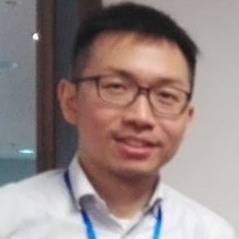Multi-Period Optimization of Sustainable Energy Systems
A special issue of Processes (ISSN 2227-9717). This special issue belongs to the section "Energy Systems".
Deadline for manuscript submissions: closed (15 May 2021) | Viewed by 15494
Special Issue Editors
Interests: chemical process design and integration; energy system design and planning; biomass supply chain network synthesis
Special Issues, Collections and Topics in MDPI journals
Interests: process synthesis, integration, and optimisation for sustainable development; safety and environmental engineering
Interests: process systems engineering; modelling and optimisation in chemical engineering; integration and optimization on energy storage systems; mitigation and control technique of greenhouse gases
Special Issue Information
Dear Colleagues,
Sustainable energy systems are an essential response to climate change challenges. Important measures include energy efficiency enhancement, increased use of non-fossil energy (e.g., renewables) and carbon capture and storage. A holistic management system would thus be necessary to integrate these initiatives for a low-carbon emission society for climate resilient economic growth. Systematic methods for the optimal synthesis, design and operation of efficient, low-carbon energy systems have been developed. Efficient and multi-functional energy systems are considered an important engineering solution to reduce carbon emissions. For example, polygeneration systems can take the opportunity for process integration from simultaneous production of multiple products, thereby achieving improved fuel efficiency and reduced carbon emissions. Integrating renewables into the energy mix can achieve similar benefits. Process systems engineering (PSE) methods can be applied to the synthesis of such sustainable energy systems, which should normally be designed with multi-period consideration to account for variations in product demand and resource availability, as well as changes in external factors such as electricity price.
This Special Issue on “Multi-Period Optimization of Sustainable Energy Systems” aims to curate novel advances in the development and application of PSE and alternative tools to address longstanding challenges in the synthesis and design of sustainable energy systems for multi-period operations. Topics include but are not limited to:
- Energy-related resource conservation networks;
- Distributed multi-functional energy systems (e.g., trigeneration and polygeneration systems);
- Regional or sectoral low-carbon energy systems;
- Bioenergy supply chain networks;
- Penetration of renewable energy through energy storage; and
- Power-to-X (P2X) systems.
Dr. Jui-Yuan Lee
Prof. Dr. Adeniyi Jide Isafiade
Prof. Dr. Yongzhong Liu
Guest Editors
Manuscript Submission Information
Manuscripts should be submitted online at www.mdpi.com by registering and logging in to this website. Once you are registered, click here to go to the submission form. Manuscripts can be submitted until the deadline. All submissions that pass pre-check are peer-reviewed. Accepted papers will be published continuously in the journal (as soon as accepted) and will be listed together on the special issue website. Research articles, review articles as well as short communications are invited. For planned papers, a title and short abstract (about 100 words) can be sent to the Editorial Office for announcement on this website.
Submitted manuscripts should not have been published previously, nor be under consideration for publication elsewhere (except conference proceedings papers). All manuscripts are thoroughly refereed through a single-blind peer-review process. A guide for authors and other relevant information for submission of manuscripts is available on the Instructions for Authors page. Processes is an international peer-reviewed open access monthly journal published by MDPI.
Please visit the Instructions for Authors page before submitting a manuscript. The Article Processing Charge (APC) for publication in this open access journal is 2400 CHF (Swiss Francs). Submitted papers should be well formatted and use good English. Authors may use MDPI's English editing service prior to publication or during author revisions.
Keywords
- process systems engineering
- process integration
- energy recovery
- hydrogen management
- distributed generation
- renewable energy systems
- bioenergy
- waste management
Benefits of Publishing in a Special Issue
- Ease of navigation: Grouping papers by topic helps scholars navigate broad scope journals more efficiently.
- Greater discoverability: Special Issues support the reach and impact of scientific research. Articles in Special Issues are more discoverable and cited more frequently.
- Expansion of research network: Special Issues facilitate connections among authors, fostering scientific collaborations.
- External promotion: Articles in Special Issues are often promoted through the journal's social media, increasing their visibility.
- e-Book format: Special Issues with more than 10 articles can be published as dedicated e-books, ensuring wide and rapid dissemination.
Further information on MDPI's Special Issue policies can be found here.







